7 minutes
Cosmo Communicator | Hands-On

Our company participated in the funding of the Cosmo Communicator and got two (probably early prototype) devices from Cosmo.
As a software developer, a tech review is something I usually not do (on a professional level), yet I decided to spend some time with the device and unload my uncensored opinion in this blog. There will be at least one follow up article to this early “Hands On” to investigate how the Cosmo Communicator actually performs as a daily driver. Once it is possible (and if the workload permits) I might consider another entry about modifying the Communicator’s software.
This article continues with a short explanation about the device itself, followed by a longer unpacking session in pictures with some comments and concludes with a short, commented, illustrated hands-on section.
What it is and wants to be
Long story short: the Communicator, as the successor of the Gemini PDA is, or rather tries to be, as close to be a hackable notebook as possible while still being an android smartphone. Needless to say, buyers and early adopters are most likely enthusiasts. It’s quite hard to imagine the actual target audience for that device.
On their Indiegogo page, Cosmo is describing the Communicator as follows:
- Cosmo Communicator is a pocketable clamshell smartphone with a physical backlit keyboard
- The device features dual colour touchscreen displays and a 24MP camera
- External 2" touchscreen when device is closed and large 6" touchscreen when the device is open - ample space to create on the move.
- Cosmo runs Android 9 (Pie) and also supports Linux OS, such as Sailfish OS and Debian, with a multi-boot option
- Built to be the only device you need to carry, and small enough to fit in your pocket, it’s a true all-in-one replacement for both your mobile phone and your laptop.
The main reason why our company is interested in this device (beside its obvious coolness) is the (promised) possibility to install both Android, Sailfish, Ubuntu Phone and even some native GNU/Linux distributions, thus getting it as close to mainly running Free Software as it gets. If installing multiple (mobile) operating systems on a mobile device sounds interesting to you, this might be your device.
The lengthy Unboxing
As mentioned before, I got my hands on this bad boy. I did my best to capture what it looks and feels like. So here is a little commented gallery of my unboxing process. We start with the outside of what-we-got-here and dig in deeper later.
The front of the box.

The right side, showing the planet logo.
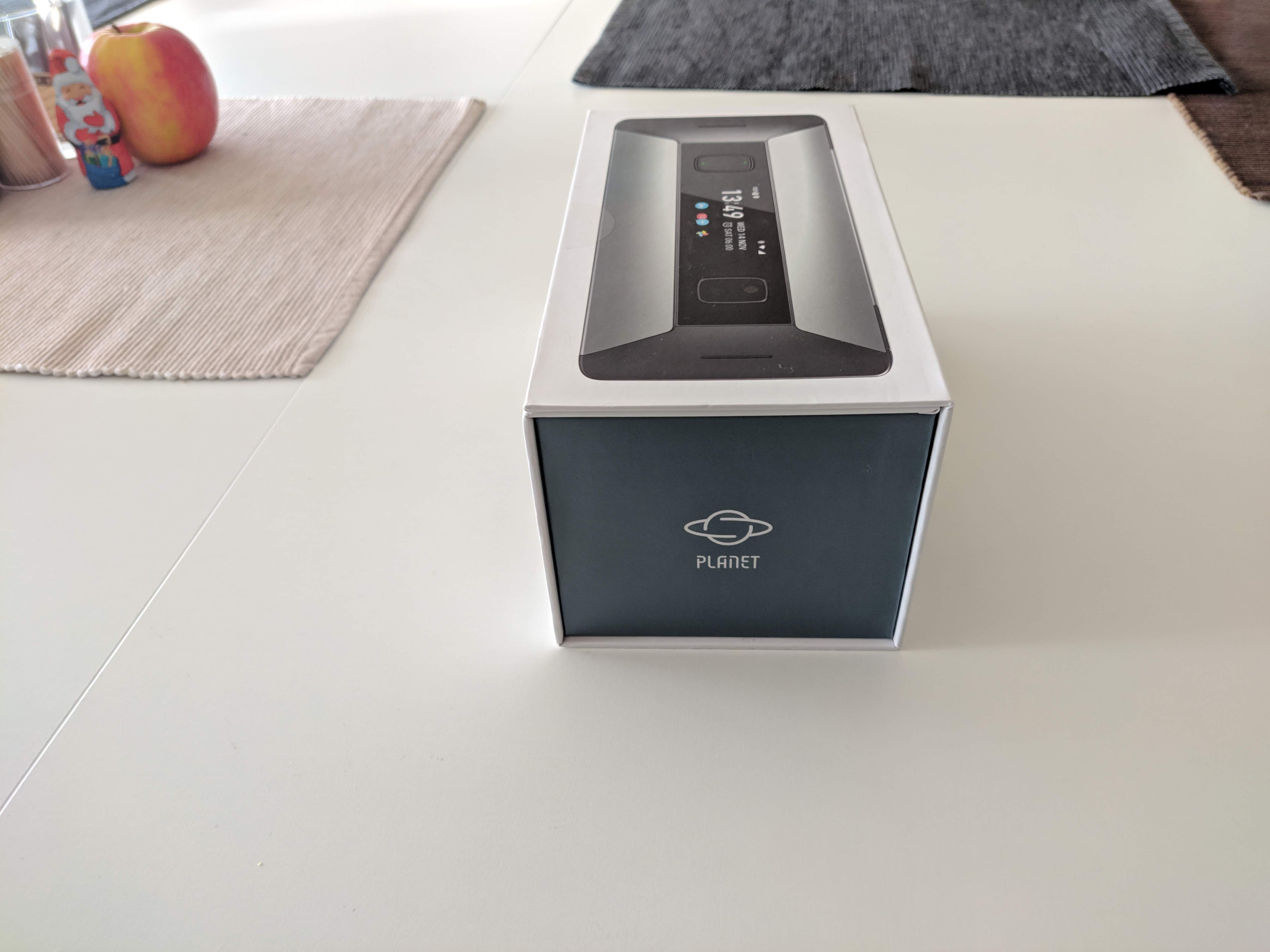
The back.
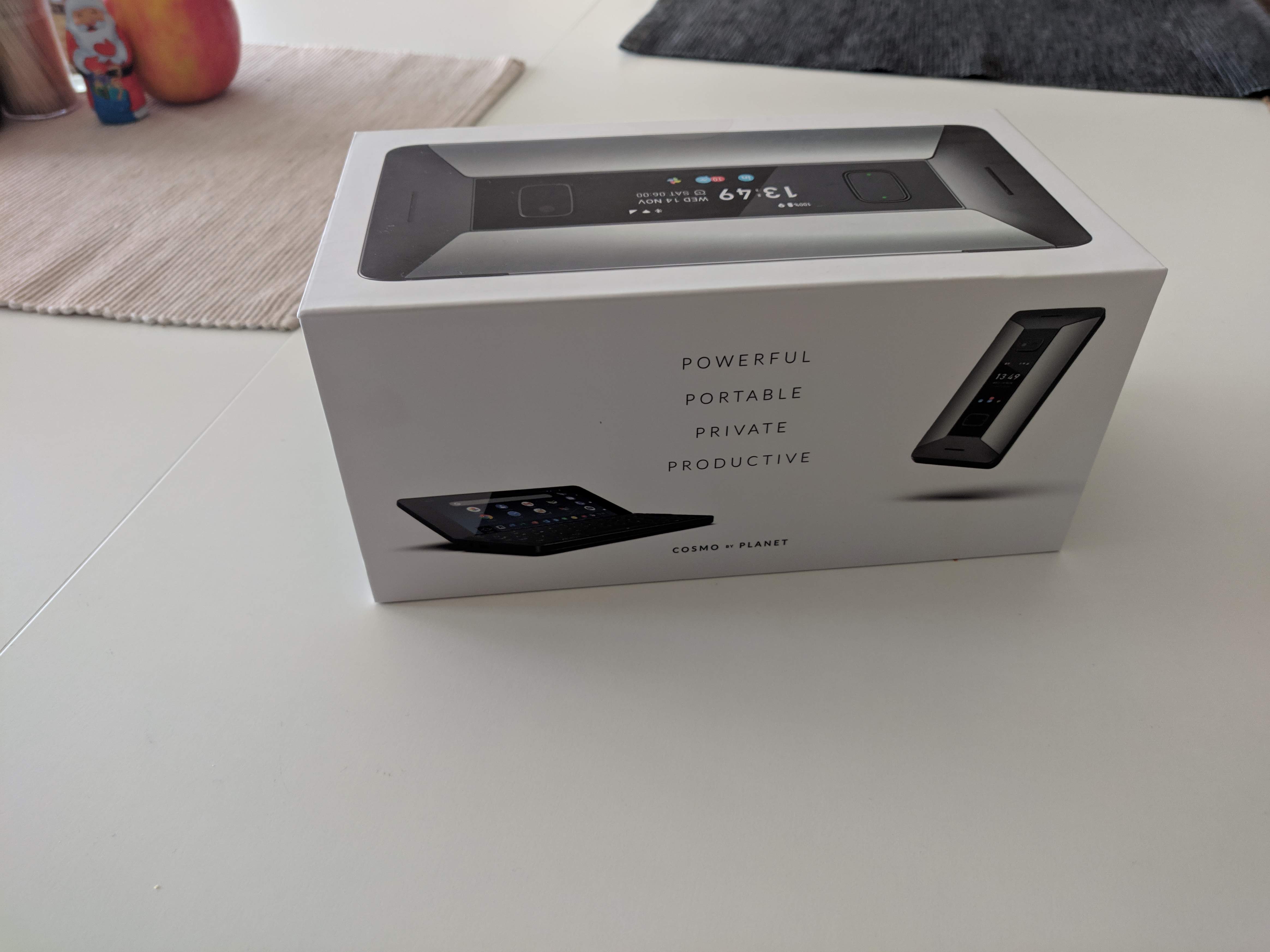
Opening the main lid of the boxing.

Certainly, Planet is not competing with Apple or Samsung in terms of producing smartphone devices, yet the presentation and all the little details on their product box is quite impressive. Resembling the device, the “lit” is held by a tiny magnet which gives opening and closing the box a nice feedback. I tried to capture it in this video.
( spoiler warning: don’t pay attention to the bottom left part of the vide ;-) )
You find the phone under a second lit nicely wrapped.
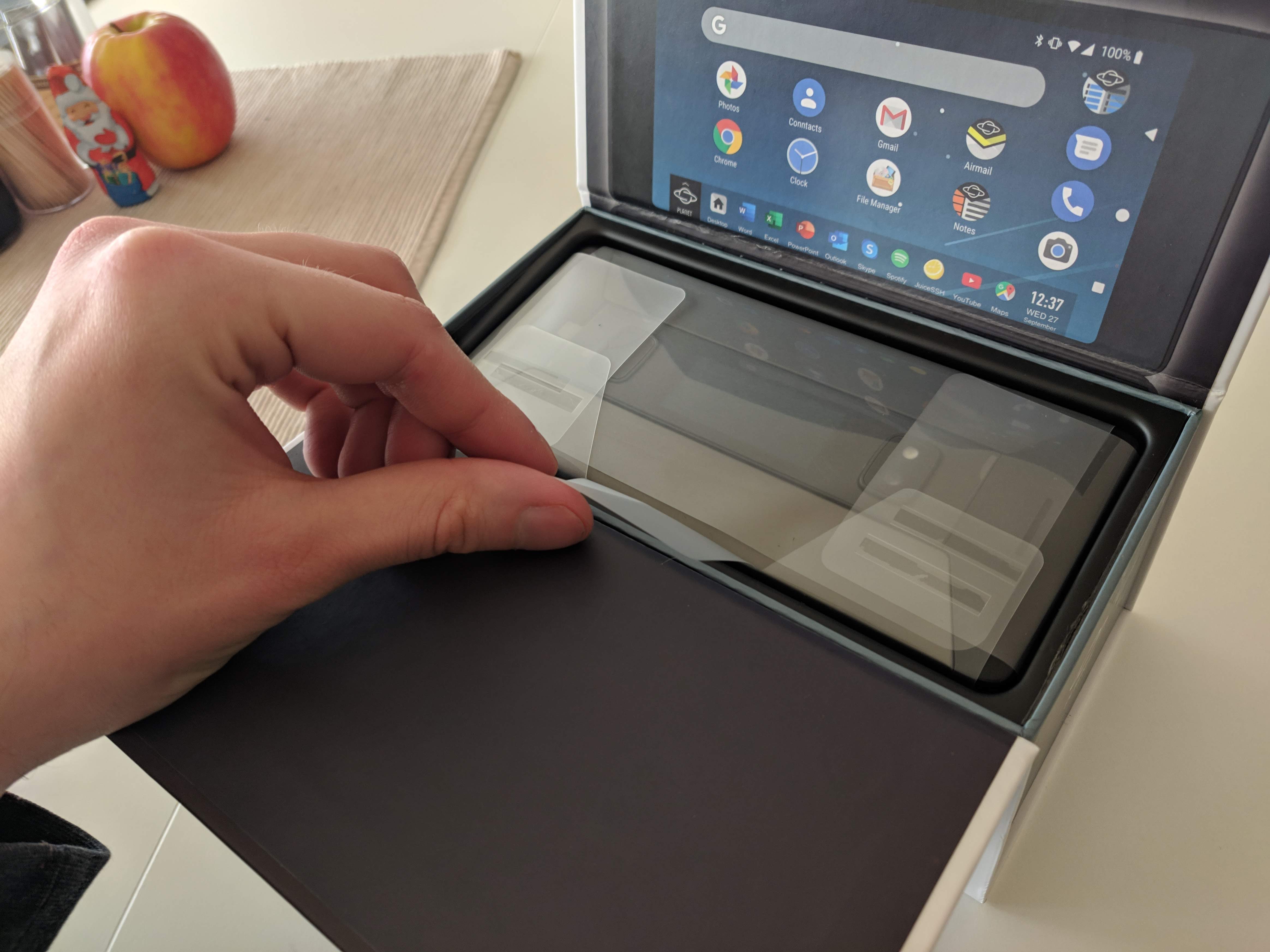
The rest of the packing comes close to what you get from buying an Apple or Samsung device

Here is the full content of the box. Next to the device, Planet is giving you a charger, a USB-C Cable, the instructions in a booklet, (some more wrapping) and three stickers with the Planet logo.

The Cosmo communicator is definitely large and both height and thickness.
On the front side of the device you can see the camera, a tiny display and a three-button-fingerprint-sensor combination.

The front.

The left side with a USB-C slot and an audio jack.
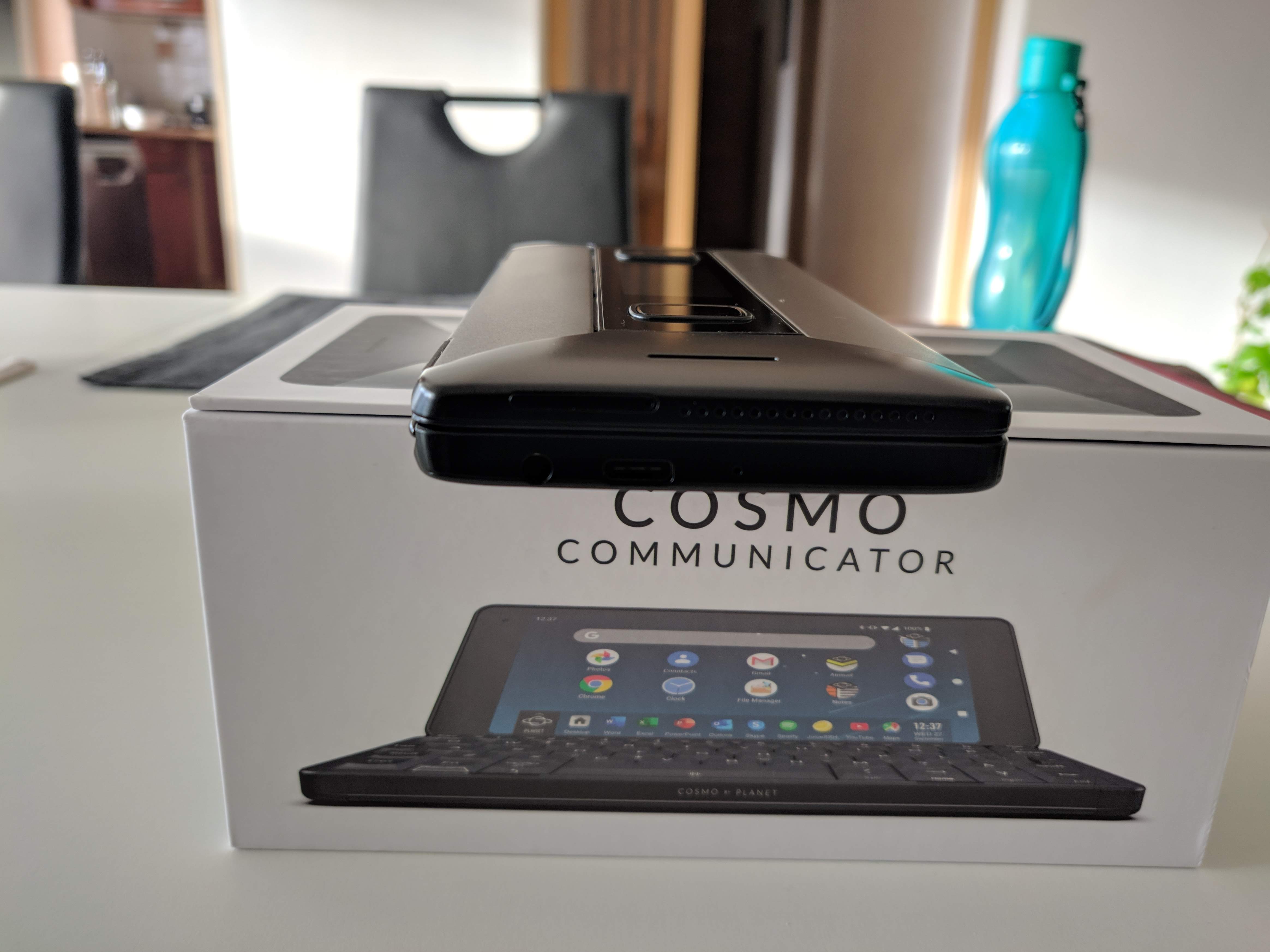
The back. The gray “wrapping” is a nice detail since it can serve as a stand.
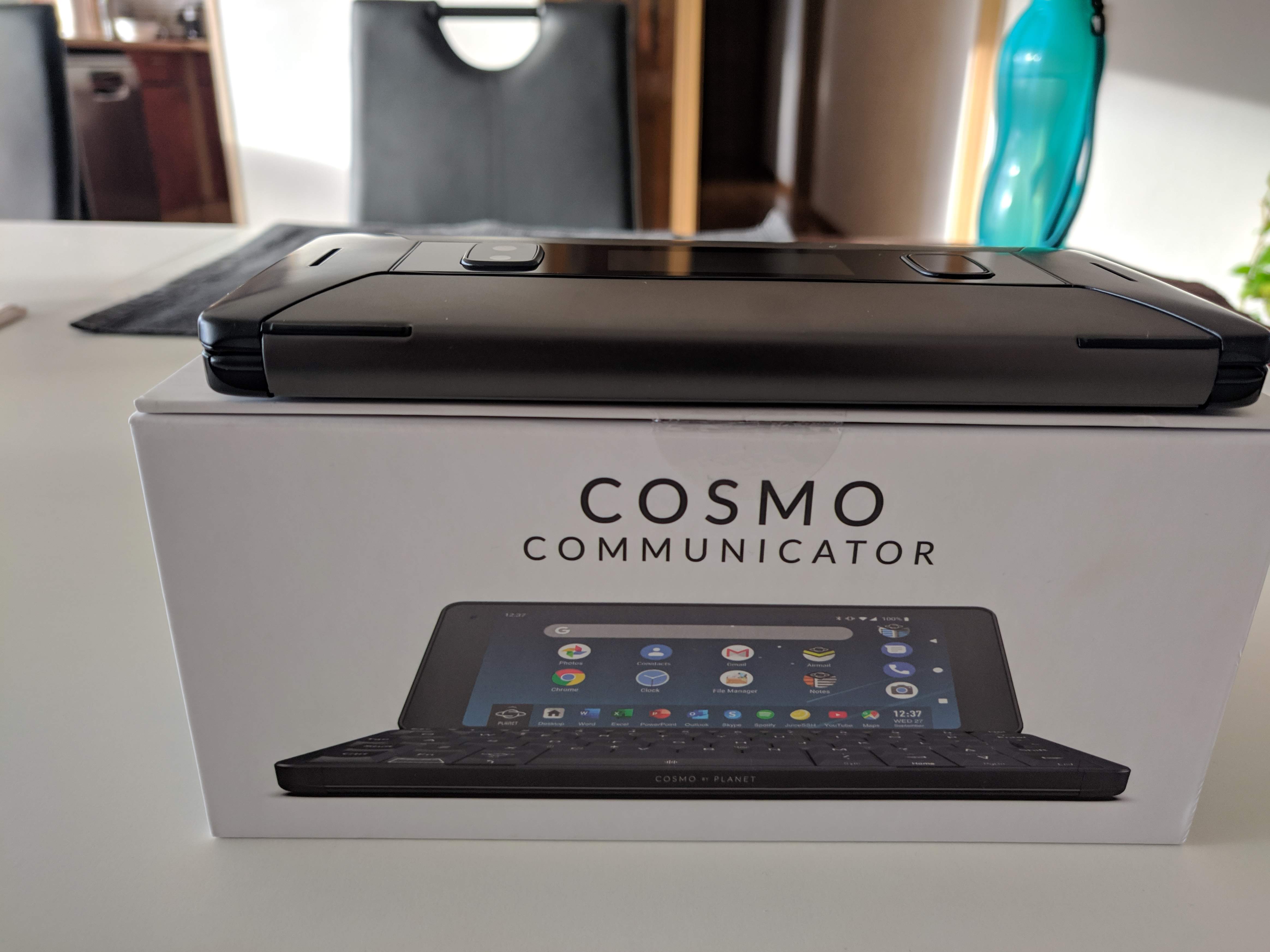
The right side with the main button (gray) and another USB-C slot.
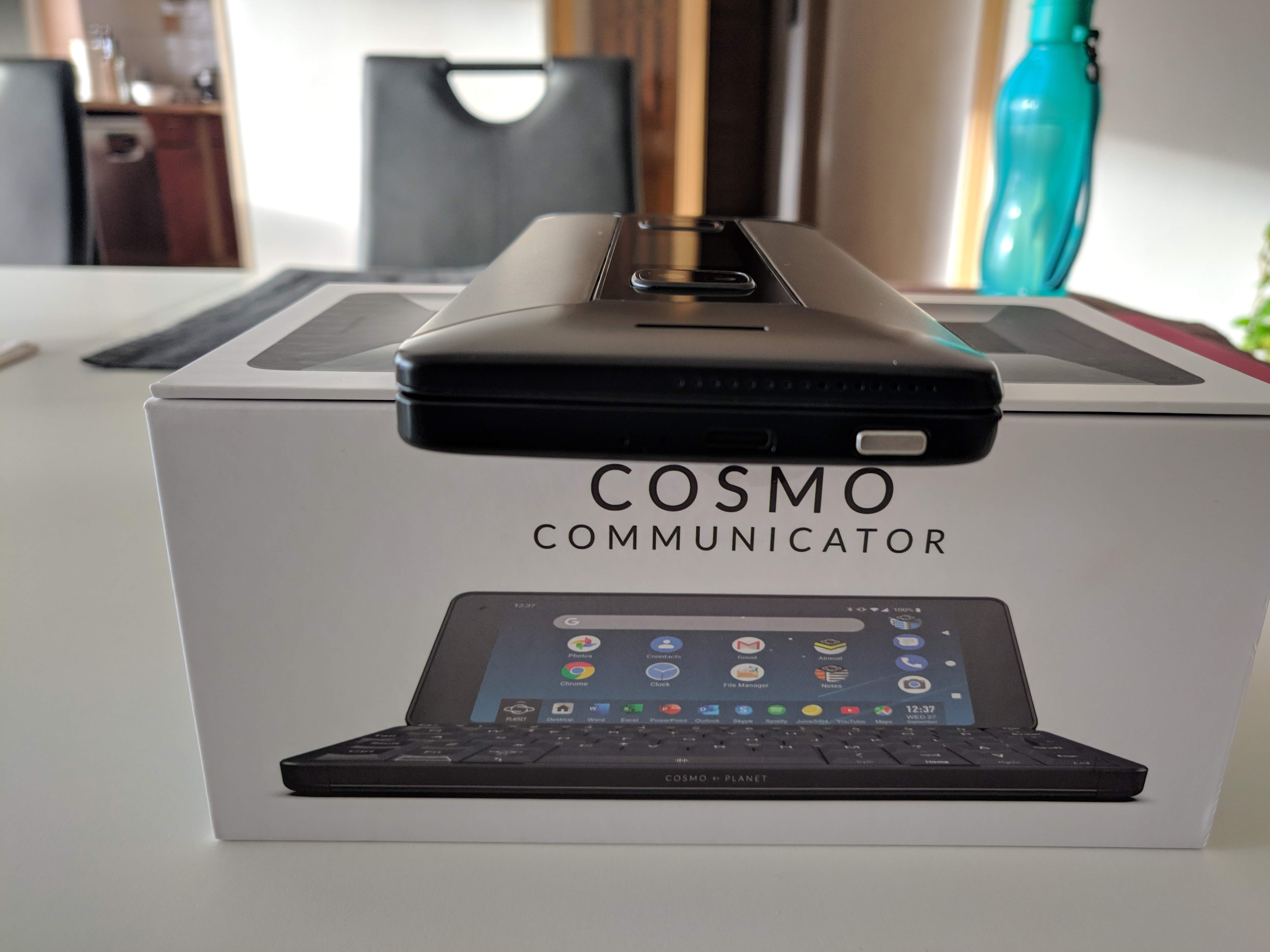
The less lengthy Hands-On
The device looks solid and sturdy. It’s definitely heavy and clunky (but it least it won’t bend in your pocket).
The keyboard is a little more “real” than what you would expect on a mobile device.
No super flat unresponsive buttons. You can feel and hear every key press that you make on that device.
Due to the gray cover, which automatically unfolds to a foot after opening the device, it stands more stable than you would guess from this picture.

The Cosmo Communicator is just a little smaller than an iPad Mini.
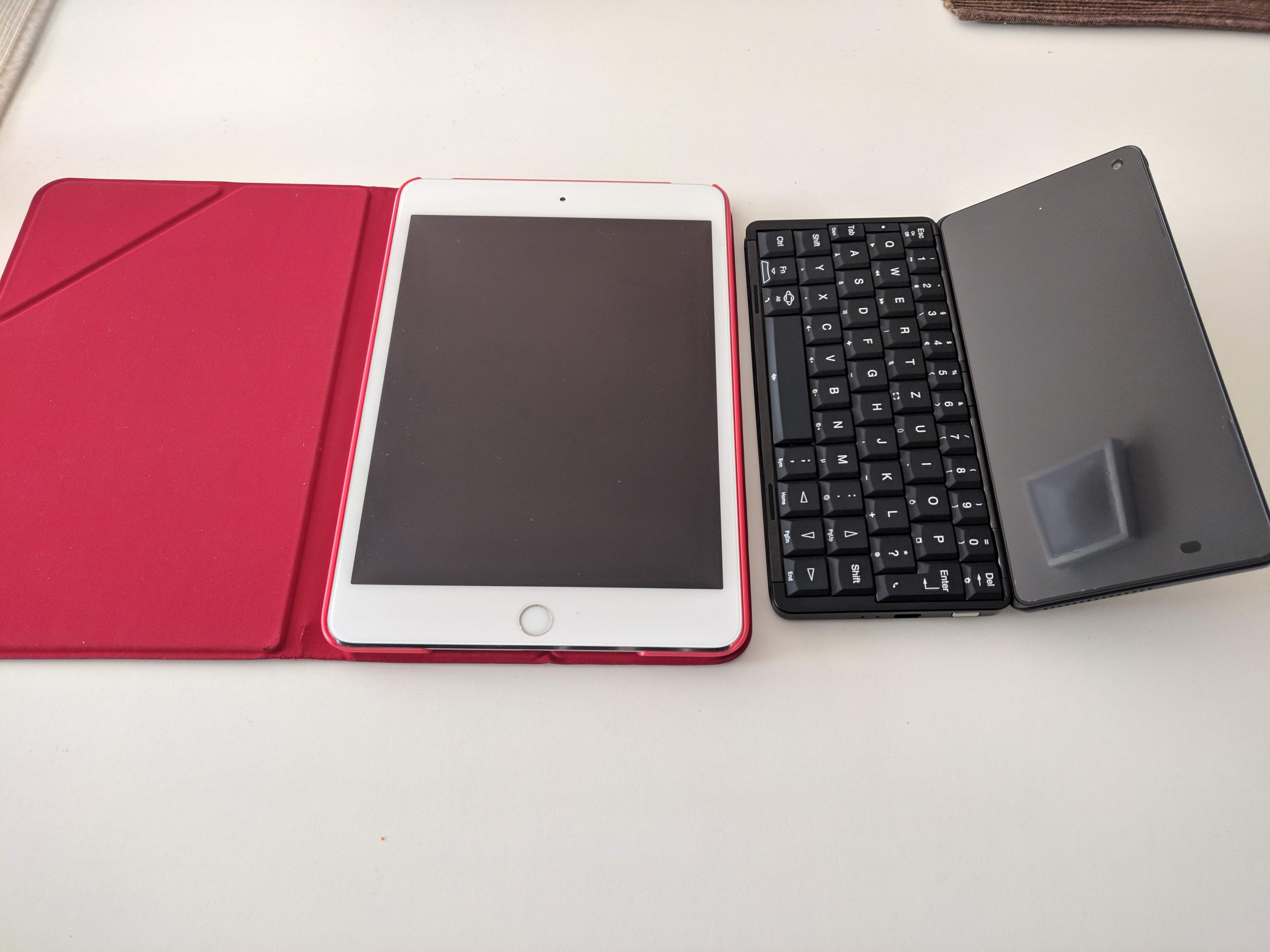
If you’d try to hold it on one hand, this is what it would look like. Keep in mind that my hands are already quite large.
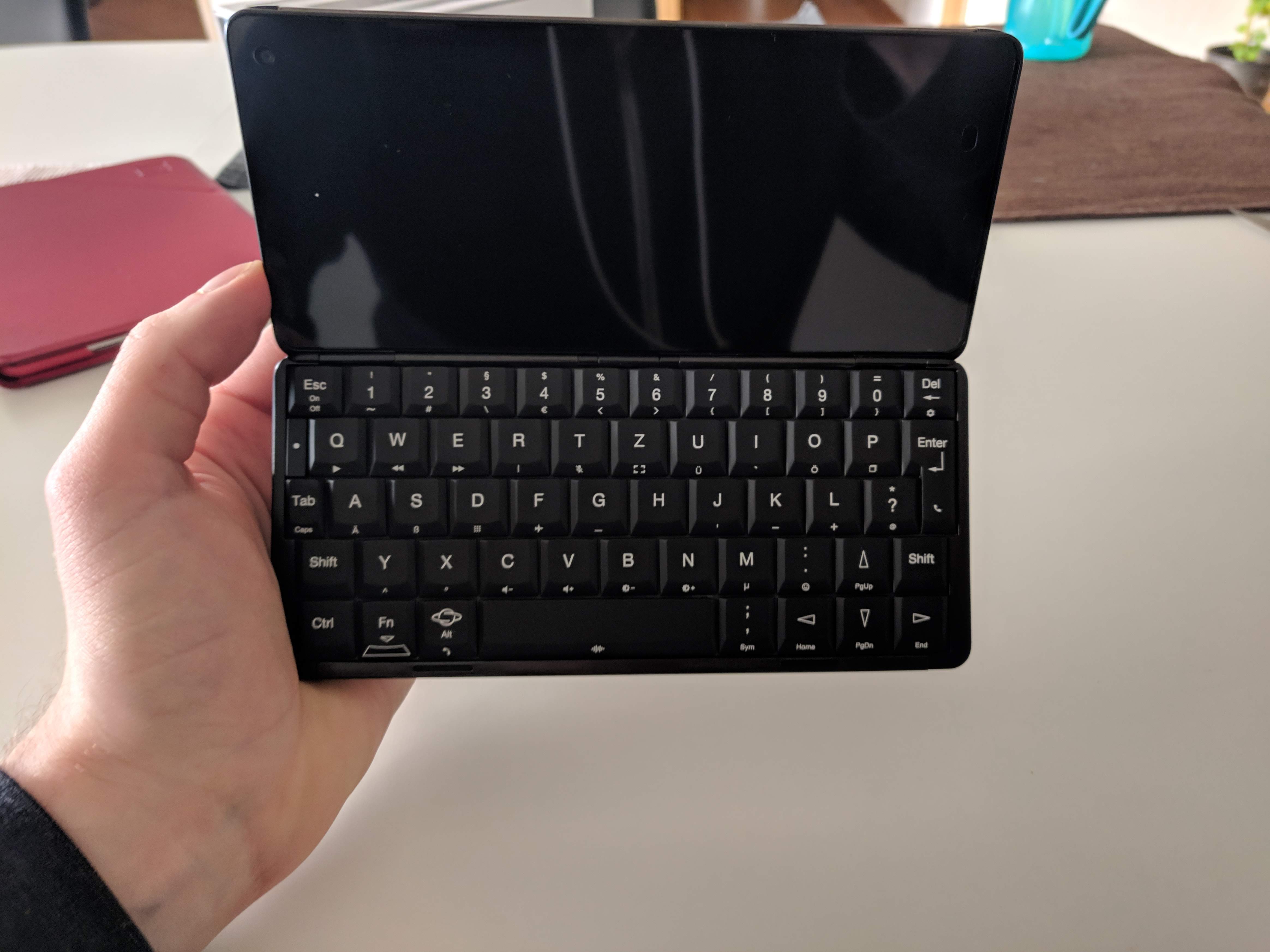
Funny boot animation. I was not even sure if the device would turn on or not. Just keep the escape button pressed and hope for the best.

The first setup was pretty fast and quick. I was not bothered with setting up a Google account. After picking a language everything was up and running
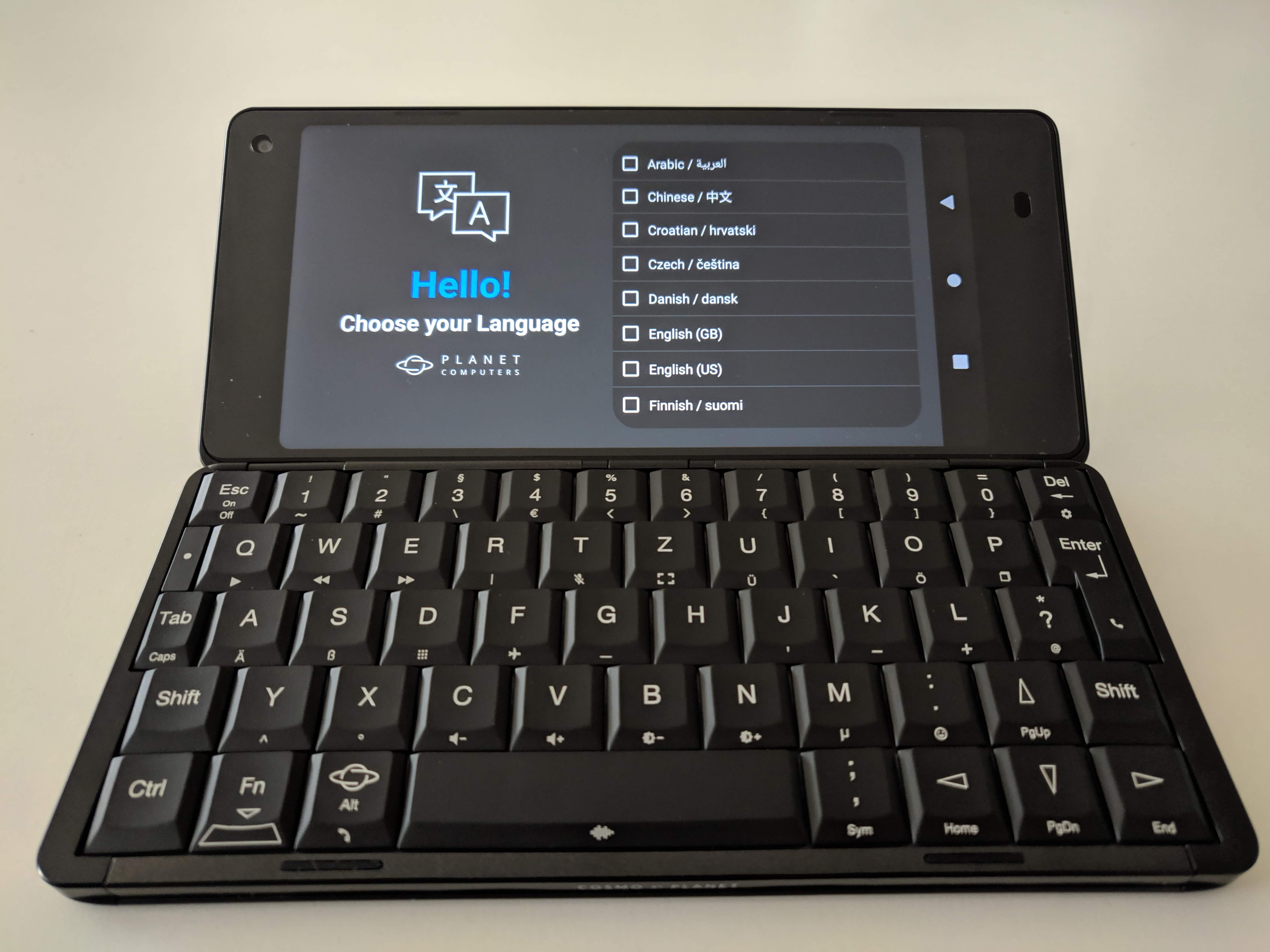
Finding the android app drawer was not to obvious at first.
You may use the touch screen to swipe up on the left side, or use a shortcut on the keyboard.
In fact, you can use the keyboard exclusively if you are willing to learn all the key combinations and
shortcuts.
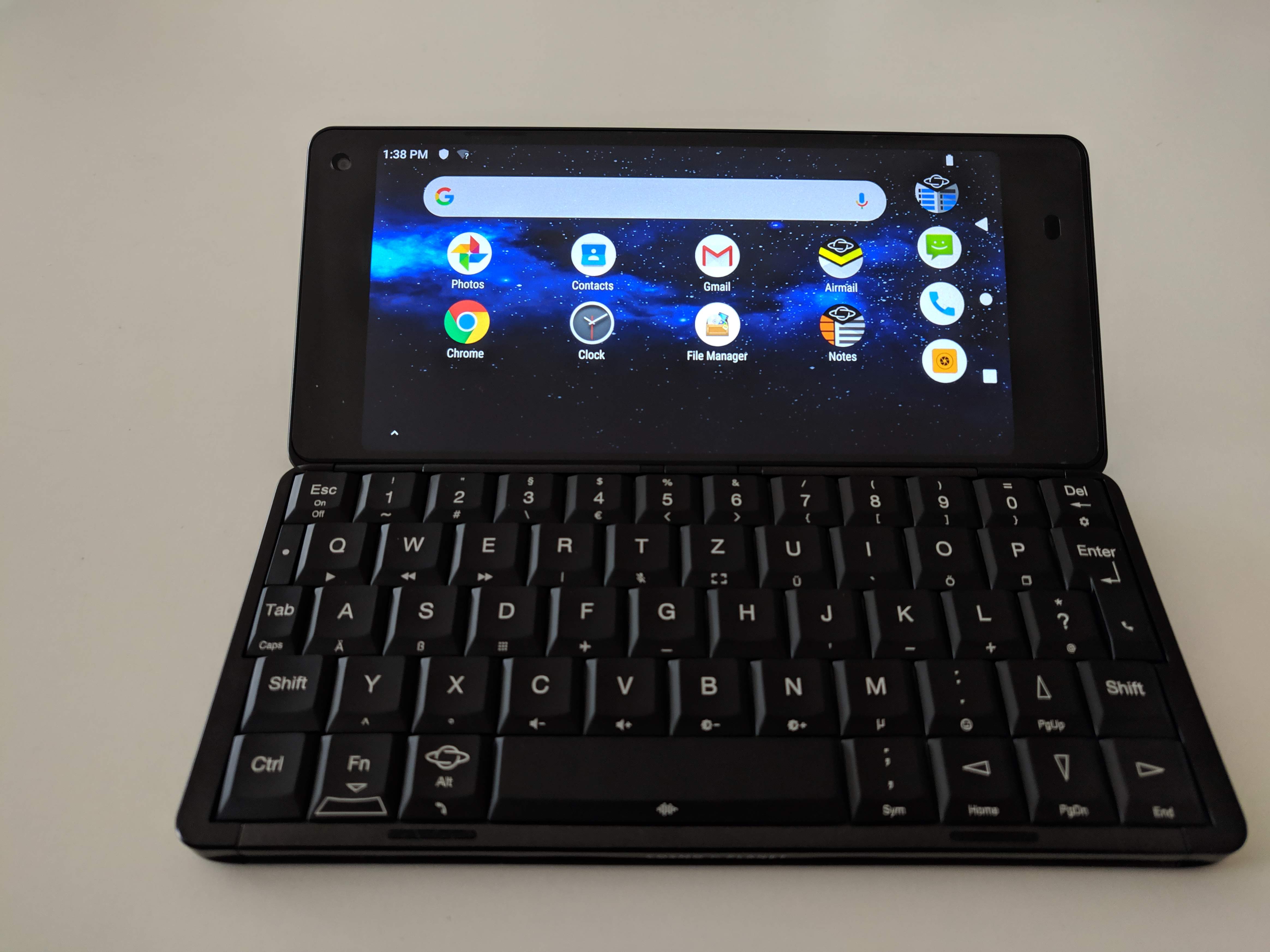
After closing the Communicator, you can interact with your device using the smaller touchscreen outside of the button below. The touchscreen works but is pretty unresponsive (might get fixes via software later). Furthermore, it may not turn itself off if you are calling, which made me accidentally drop a few phone calls.
The button (or rather buttons) on the downside can be used to answer or deny calls (by pressing left or right).
It also serves as a fingerprint reader.
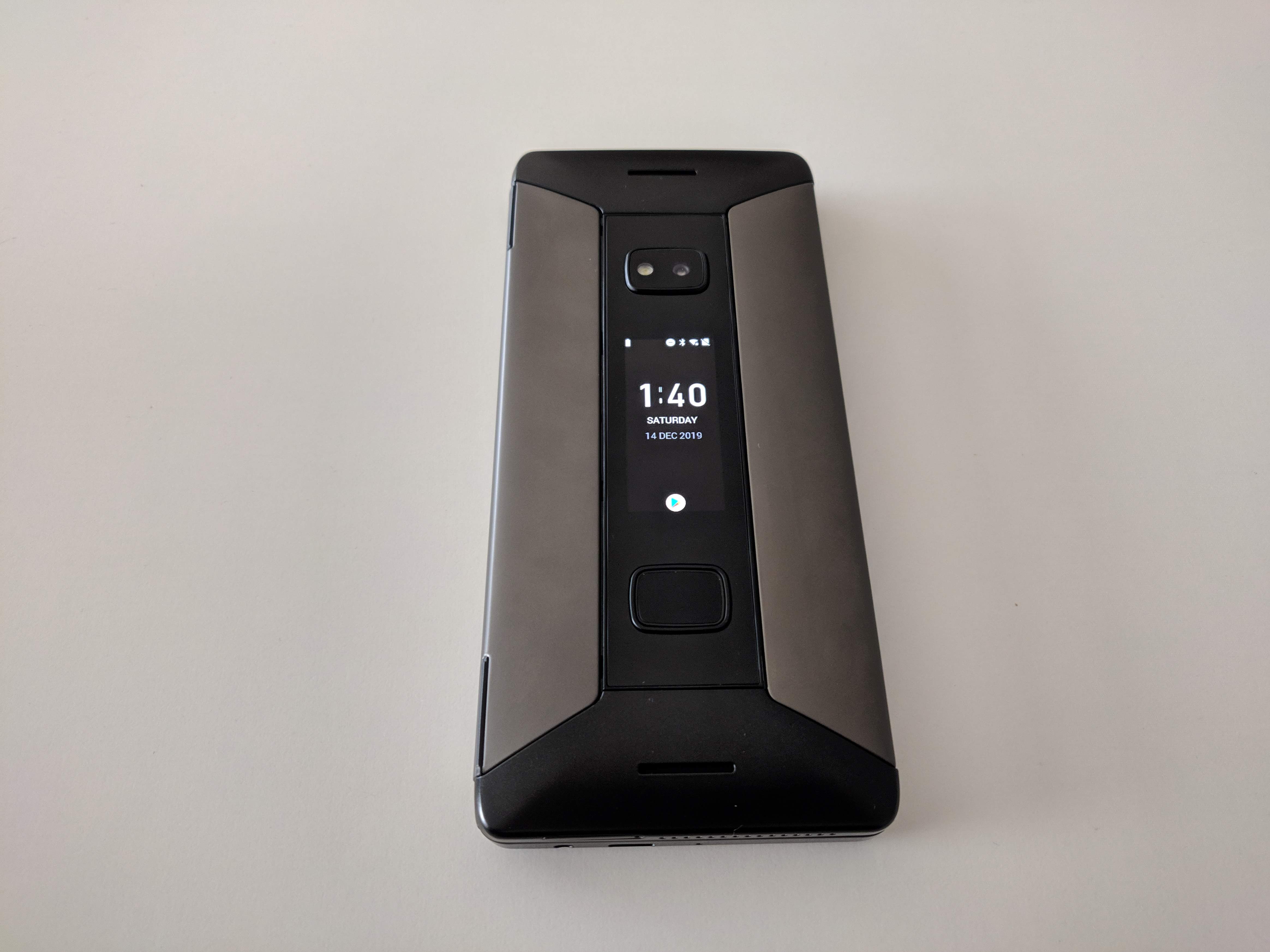
One last thing to cover in this hands-on is the closing mechanism. The magnet which keeps the lit closed is quite strong and hard to overcome with just one hand. I usually feel sorry for my screen when closing the device too fast. I tried to capture the opening and closing effect on video (using a self build phone tripod that I cut from an empty box of apple juice) Since my table is too white, my phone camera tries to focus like crazy.
Final thoughts
This sums up our first hands-on report about the Comsmo Communicator. Although the hardware looks and feels nice - as fat and heavy as it is - the immaturity of the software does shine through, but we’ll get to that later I suppose.
Having a real keyboard on an Android device feels nice, but apparently, for some reason totally oblivious to me, the regular feedback of a key press may not be enough for the developers of the Cosmos Communicator, who felt the necessity to confirm every single keystroke with a response from the phones' vibration module. Turning that off required some digging in the Cosmos settings app.
They space bar was actually a little unresponsive on my device. Not always getting a whitespace after hitting the space bar seems to be quite common. Perhaps that is unique to my typing style or to my device, since we could not confirm this behavior on our second Cosmos Communicator.
In the next part of this hands-on, which will probably be way less cluttered with images, I will report how well the Cosmos Communicator served as a regular smartphone for everyday use.
Don’t expect it anytime soon. The Christmas decoration (of 2019) on the photos was there for the reason of season. Have a nice year or so.